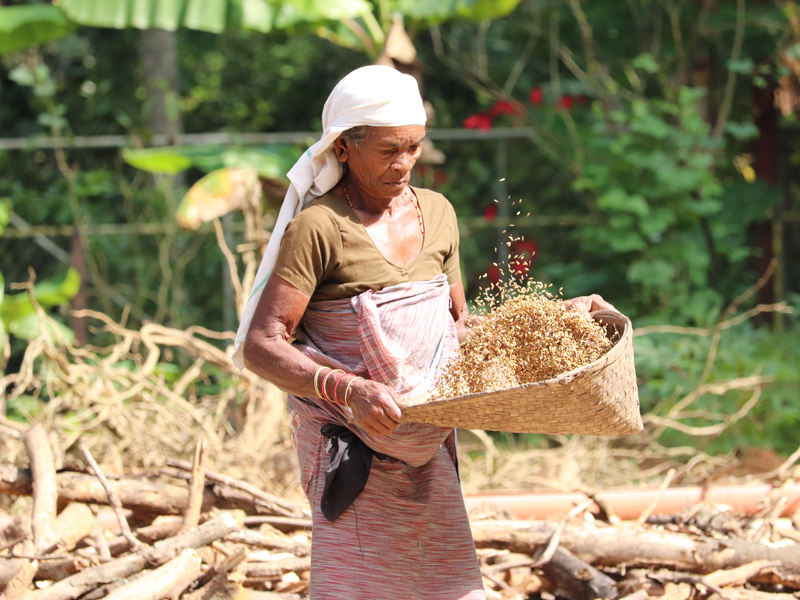
MSSRF adopted a three-pronged strategy for the conservation of rice landraces and rice agroecosystem: First, by bridging the yield gap of native crops and varieties through participatory approach and technology transfer; secondly, making rice a profitable crop by promoting innovative farming methods for enhanced productivity while reducing production costs; and lastly, raising awareness to conserve rice landraces made possible by incentivising cultivation of landraces, also protecting the rights of custodian farmers over these landraces. To increase their competitive advantage over modern varieties, MSSRF adopted a science-based approach to increase yield through purified seed production, good agricultural practices and by ensuring access to quality inputs.

MSSRF attracts DISCOURSE on the importance of traditional rice varieties, PERSUADING the local self- governments to incentivise growing more vanishing varieties
This approach also helped farmers gain access to knowledge and farm machines, plus improved cultivation practices. Poor profit, increasing cost of labour and penetration of profitable alternate crops, have serious repercussions on the local food systems in the region. So, MSSRF worked with rice farmers by facilitating transfer of innovative technologies and farming practices, while also demonstrating good practices to increase crop yield and reduce production costs. Over the years, MSSRF worked with more than 5000 rice farmers using the participatory research approach, along with demonstrations and trainings to build capacities and encourage innovative farming for paddy.
On the technology side, to enhance rice yield and profit, MSSRF introduced a customised System of Rice Intensification (SRI) in the early 2000s, specific for waterlogged area as well as for landraces. SRI was found to be more effective on high-yield varieties, and during the summer (Puncha) season but also gave significant increase in yield of traditional rice varieties.
Interventions proved that rice can be cultivated for a reasonable profit when technology is adopted properly (Report submitted to DST). Participatory yield enhancement trials and development of organic package of practices for traditional rice varieties helped farmers increase productivity by up to 20 (Report submitted to DST, 2022). Establishment of 30 seed villages, participatory seed purification and seed exchange activities resulted in access and availability of quality seeds (Report submitted to DST, 2022), and over 11000 farmers received seeds of traditional rice varieties.
Outcomes: By generating awareness on the importance of rice genetic resources and the ecological significance of protecting wetland rice among Panchayat Raj Institution members, NGOs, and the farming communities, MSSRF attracted discourse on the importance of traditional rice varieties. The new momentum persuaded local government to incentivise growing more traditional rice varieties. The State Agriculture Department also introduced a subsidy and financial incentive for cultivation of traditional rice varieties, with Rs. 10,000/ha (GO (Rt). No. 984/2017 AGRI). MSSRF supported farmers in securing rights over traditional rice varieties, and registered farmers’ varieties under the PPVFR Act. To secure the rights of tribal farmers over traditional rice varieties, MSSRF facilitated the Genome Saviour Award for custodian farmers who conserved 21 traditional rice varieties (Kumar et al., 2015). Now farmers feel it a matter of prestige to conserve specialty rice varieties like Gandhakasala and Jeerakasala. The modified method of SRI designed by MSSRF proved effective in increasing rice yield to the range of 15 – 20 , and reduced cost of production in the range of 10 to 15 (report submitted to DST and ANAHA)
There is also now a network of custodian farmers through seed villages, and SeedCare – a peoples’ institution in Malabar for conserving landraces that is a recognised network of custodian farmers in the Malabar region.
